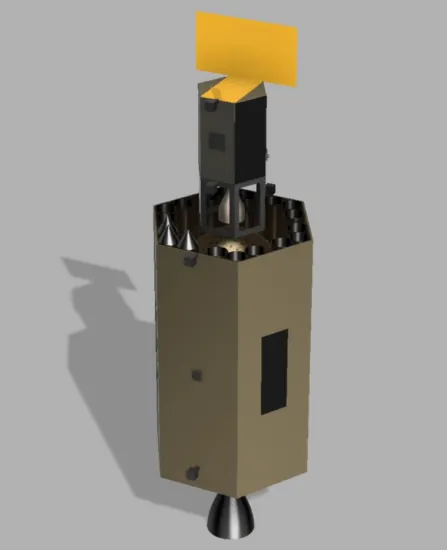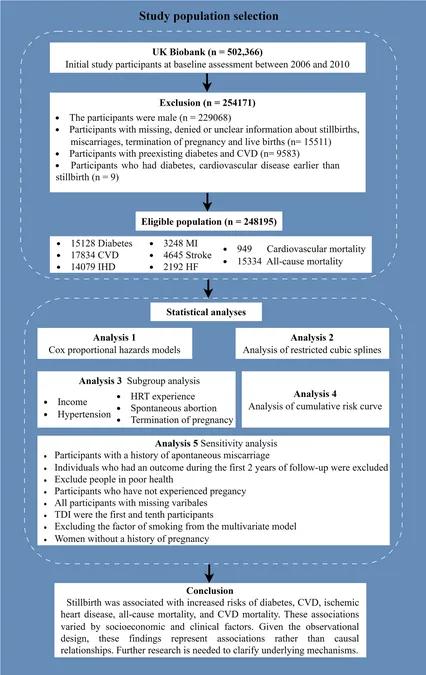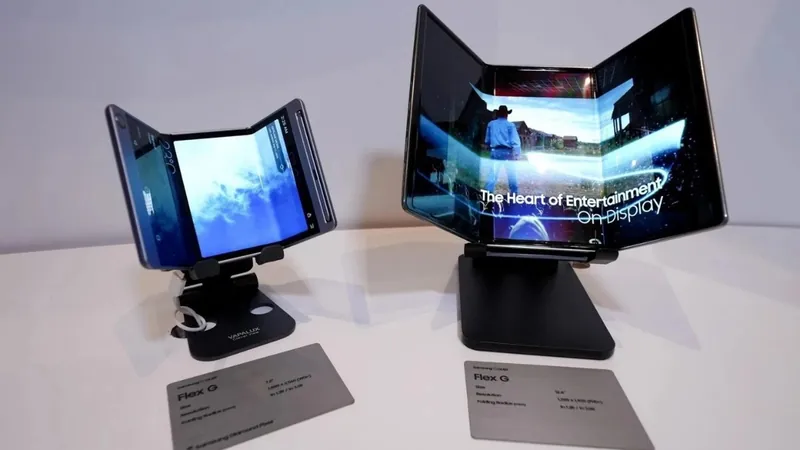
Unleashing LEAVES: A Bold Mission to Decipher the Mysteries of Venus!
2025-01-08
Author: Nur
The cosmos continues to pique the curiosity of scientists and space enthusiasts alike, and one of the most enigmatic planets—the second from the Sun, Venus—stands at the forefront of exploration efforts. A recent venture, funded by the National Aeronautics and Space Administration’s Innovative Advanced Concepts (NIAC), is the Lofted Environment and Atmospheric Venues Sensors (LEAVES) project, designed to unlock the secrets of Venus’s atmosphere.
Completed by a group of innovative undergraduates at Worcester Polytechnic Institute (WPI), this project takes a pivotal step towards enhancing our understanding of Venusian conditions. The students presented their findings in a B.S. thesis, laying out an ambitious satellite plan that aims to support the LEAVES mission by facilitating communication with these probes.
What Makes LEAVES Special?
The brilliance of the LEAVES technology lies in its cost-efficient approach to gathering data in Venus's upper atmosphere—from about 30km to the striking 100km altitude. These sensors are engineered to drift gracefully down into the thick Venusian clouds, analyzing atmospheric properties such as temperature, pressure, and chemical composition. Unlike traditional probes equipped with propulsion systems, LEAVES glide autonomously, showcasing a revolutionary approach to Venus exploration.
As these instruments descend, they could shed light on outstanding scientific queries. For instance, scientists are clamoring to understand which mysterious compounds are soaking up near-ultraviolet light in the upper atmosphere and what the concentration levels of carbon monoxide may be in the surrounding environment.
A Two-Part Satellite Mission
The team at WPI conceptualized an ingenious strategy involving two satellites: Demeter and Persephone. This twin spacecraft plan promises to expand the reach and efficiency of data collection during the mission.
Demeter will play a crucial role by launching the LEAVES into the atmosphere. Armed with precise deployment strategies, it is designed to release eight LEAVES every 20 degrees of latitude, resulting in a total of 144 data-gathering probes spread strategically around the planet. This coordinated effort is particularly significant as it will occur during various times of daylight and darkness, allowing researchers to analyze how the day/night cycle affects the sulfur dioxide flow on Venus.
Meanwhile, Persephone, resting in a higher orbit, will serve as the data relay. After receiving signals from the deployed LEAVES, it will transmit the gathered information back to Earth for detailed analysis.
The Technical Challenges Ahead
While the majority of technologies employed on both spacecraft boast a high Technology Readiness Level (TRL-9), the project does face hurdles. The deployment mechanisms for LEAVES are still in the development phase, with a TRL around 1-2, necessitating further testing before they can confidently support a space mission.
Currently, there isn't a fixed timeline for the advancement of these technologies, as the LEAVES project remains in its conceptual phase. However, as interest in Venus exploration surges, it is highly probable that similar missions will eventually take off, offering opportunities for the dedicated team behind this innovative concept to contribute toward a groundbreaking Venus exploration mission.
Why Does This Matter?
With Venus often dubbed Earth's "evil twin" due to its hellish atmosphere and scorching temperatures, understanding its atmospheric dynamics could have profound implications not just for planetary science but also for our own climate understanding. The data collected by LEAVES has the potential to provide unprecedented insight into climate phenomena, which may mirror or contrast Earth's own atmospheric processes.
Stay tuned for further developments on this captivating project that promises to bring us one step closer to unraveling the many mysteries of our neighboring planet, Venus. Who knows? The next wave of discoveries could be just a launch away!




 Brasil (PT)
Brasil (PT)
 Canada (EN)
Canada (EN)
 Chile (ES)
Chile (ES)
 Česko (CS)
Česko (CS)
 대한민국 (KO)
대한민국 (KO)
 España (ES)
España (ES)
 France (FR)
France (FR)
 Hong Kong (EN)
Hong Kong (EN)
 Italia (IT)
Italia (IT)
 日本 (JA)
日本 (JA)
 Magyarország (HU)
Magyarország (HU)
 Norge (NO)
Norge (NO)
 Polska (PL)
Polska (PL)
 Schweiz (DE)
Schweiz (DE)
 Singapore (EN)
Singapore (EN)
 Sverige (SV)
Sverige (SV)
 Suomi (FI)
Suomi (FI)
 Türkiye (TR)
Türkiye (TR)
 الإمارات العربية المتحدة (AR)
الإمارات العربية المتحدة (AR)